| GISdevelopment.net ---> AARS ---> ACRS 1980 ---> Technical Session |
Digital Image Analysis
System
A. Tsuboi
System Development Laboratory, Hitachi Ltd. 1099, Ohzenji
Tama, Kawasaki, Kanagawa 215, Japan
U. Kubo, S. Yamagata
Omika Works, Hitachi Ltd. 5-2-1 Omika-cho
Hitachi-shi, Ibaraki-ken, 319-12, Japan
S. Fukahata
Electrical and Control System Division, Hitachi Ltd
Nippon Bldg., 6-2, 2-Chome, Ohtemachi, Chiyoda-ku,
Tokyo, 100, Japan
T. Kato
Systems Engineering Division, ditto
System Development Laboratory, Hitachi Ltd. 1099, Ohzenji
Tama, Kawasaki, Kanagawa 215, Japan
U. Kubo, S. Yamagata
Omika Works, Hitachi Ltd. 5-2-1 Omika-cho
Hitachi-shi, Ibaraki-ken, 319-12, Japan
S. Fukahata
Electrical and Control System Division, Hitachi Ltd
Nippon Bldg., 6-2, 2-Chome, Ohtemachi, Chiyoda-ku,
Tokyo, 100, Japan
T. Kato
Systems Engineering Division, ditto
Introduction
The needs for observing and surveying the earth from the space, so called Remote Sensing, have been increasing. In Japan, the Earth Observation Center (EOC), competed in January 1979, has started an all-out observing activity and so Landsat images are easily available. Under these conditions, we have developed the man-machine interactive digital color image analysis system with easy expandability and reducibility. Herein we will explain our digital image analysis system.
Our viewpoint in developing the digital color image analysis system
There are various ways of how to compose the image analysis system when we think of following characteristics of the image analysis and needs for that.
- In order to analize a greate number of image data efficiently, if is important to make full use of human ability in regard to patern recognition.
- Image analysis technique has been developing, so it is difficult to find out all the functions to cover whole methods of image analysis.
- In response to various needs for image analysis, there are numerous requests for input/output units of image data.
- Man-machine interactive system, which makes full use of image analysis functions of image display unit.
- Versatile algorithbm library, which can be easily expanded and reduced in response to each user’s request.
- High cost performance hardware configuration, which is easily realized by composing mini computer-array processor complex system in response to various needs for image analysis.
1 Function of the system
The system consists of image input function, visualization function, evaluation function, image operation function, image analysis function, image editing function, image output function and utilities.

Fig. 1 denotes the image data processing procedure and system functions.
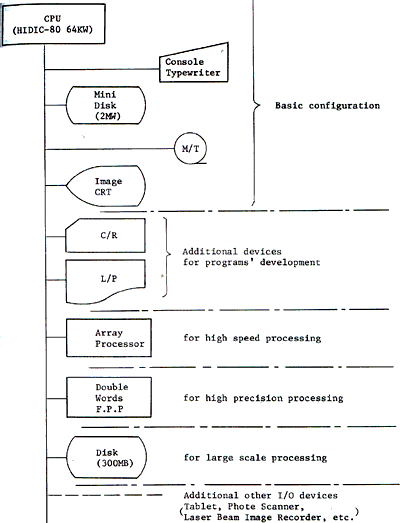
Fig. 2 Hardware System Configuration
Main characteristic functions of the system are as follows.
- Function fo dynamical and continuous enhancement by operating image display unit with track ball.
- Function of registration accuracy measurement with high speed and precision by using the two leveled image matching methods, SSDA (Sequential Similarity Detection Algorithm) and correlation method.
- Function of image distortion correction by using the resampling methods such as nearest Neighbor and Cubic Convolution.
- Function of the level slicing classification and the maximum likelihood classification, which are respectively suitable for surveying resources and making land use maps.
Hardware system configuration is versatile. Fig. 2 denotes the hardware system configuration. Basic system consists of Process Control Computer HIDIC-80 series with high reliability and expandability, console typewriter, image display unit, mini disk unit and magnetic tape unit (or other image input units). Basic system is expandable step by step in response to various users’ objects.
3 Software configuration with easy expandability of functions
The software system configuration is taken notice of following points to be expandable of functions.
- Flexibility for any object
To make the software flexible, configuration of image analysis is made of some simplified modules, which are commonly used for any object, and corresponding with objects these modules are composed by using macro instructions.
- Concentrated management of common functions by using image
monitor program
The management program called image monitor program manages concentratedly to pre-process and post-process each function of image analysis such as file management and parameters inputs.
- Interactive man-machine communication system
As the devised inquiry method is adopted, the operation for the man-machine communication is improved and functions of the system can be expanded easily.
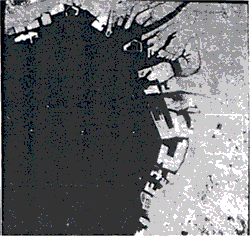
One input magnification data, then coputer displays a square located on the CRT cursor.
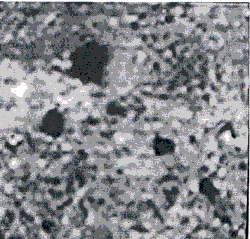
Enlarged imagery by cubic convolution method
The imagery inside the squre enlarged and displayed on the CRT in stead of raw imagery.
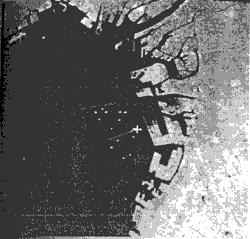
Gray Level Enhancement.
Gray level histogram belancing.
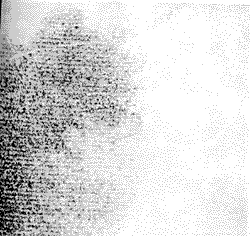
The Gray level histogram of image data inside red loop is balanced.
Fig. 3 shows the example of Landsat image data processing.
Conclusion
In this paper, we represent all digital color image analysis system, which has relized mini computer-array processor complex system with easy expandability and high cost performance and expandable software architecture. From now, we intend to improve better system responding to various needs.
References
- K. Homma, et. Al.: ‘Image Enhancement Method using Area Designation Function; Proceedings of 4th Japan Remote Sensing Symposium, November 1978.
- S. S. Rifman and D. M. Mckinnon: ‘Evaluation of Digital Correction Techniques for ERTS Image’, TRW Corporation Final Report, TRW 20634-600-TU-00.
- D.I. Barnea and H.F. Silverman: ‘A Class of Algorithms for Fast
Digital Image Registration, IEEE Trans. On Computers, Vol C-21, No. 2.
Feb. 1972